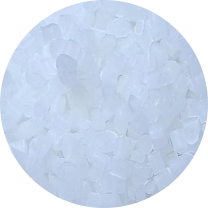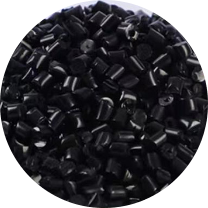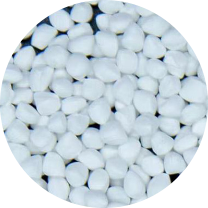Carbon Black Masterbatch: Multifunctional Additive in the Plastic Industry
Carbon Black Masterbatch is a common plastic additive widely used in the plastic processing industry. It combines carbon black, an important black pigment, with a carrier resin to form a concentrate that is easy to add to various plastic products. Carbon black masterbatch not only plays a coloring role in plastic products, but also has multiple functions such as improving mechanical properties and improving UV stability.
1. Composition of Carbon Black Masterbatch
Carbon black masterbatch is mainly composed of two parts: carbon black and carrier resin.
Carbon black: Carbon black is a small granular substance generated by cracking natural gas or petroleum, with good coloring and strong UV absorption ability. Carbon black plays a role in coloring, toughening and UV resistance in plastics.
Carrier resin: Carrier resin usually uses common plastics such as polyethylene (PE), polypropylene (PP), polyvinyl chloride (PVC), etc., which can effectively disperse carbon black and make it evenly distributed in the final product. The choice of carrier resin is closely related to the use environment and processing technology of the final product.
2. Main functions and applications of carbon black masterbatch
Coloring function: Carbon black is the main colorant of black plastics, which can provide plastic products with a stable and deep black color. Due to its high coloring efficiency, a small amount of carbon black can achieve the ideal coloring effect.
Enhance UV resistance: Carbon black has good UV absorption performance, which can effectively block the damage of ultraviolet rays to plastics and extend the service life of plastic products. Especially for plastic products used in outdoor environments, such as auto parts and building materials, adding carbon black masterbatch can significantly improve weather resistance.
Improve mechanical properties: Carbon black is not only used as a pigment, but also can improve the tensile strength, wear resistance and heat resistance of plastics, thereby improving the overall performance of plastic products.
Electrical properties: Carbon black has a certain conductivity and can be used for plastic products that need antistatic, such as products in the electronic and electrical industry, to avoid equipment damage or safety hazards caused by static electricity accumulation.
Reduce costs: Since carbon black masterbatch exists in a concentrated form, it can be easily added to the plastic according to the required proportion when used, which not only ensures the use effect, but also avoids the problems of uneven dispersion, waste and environmental pollution that may be caused by direct use of carbon black powder.
3. Production process of carbon black masterbatch
The production of carbon black masterbatch is usually completed through the following steps:
Dispersion of carbon black: The key to producing carbon black masterbatch is to evenly disperse carbon black powder into the carrier resin. In order to ensure the dispersion effect of carbon black, it is necessary to control the temperature, shear force and particle size of carbon black during the production process.
Extrusion or granulation: After the carbon black and the carrier resin are fully mixed, they are usually extruded into shape through an extruder and then cut into granules. The size and shape of the granules have an important influence on the processing performance and appearance of the final product.
Cooling and screening: The extruded masterbatch needs to be cooled and screened to remove unqualified particles to ensure the quality of the final product.
prevNo previous article
nextPP sanitary/food grade black masterbatch: Application and advantages of EVA/ABS/PET plastic particles


 English
English 中文简体
中文简体 한국어
한국어 عربى
عربى













